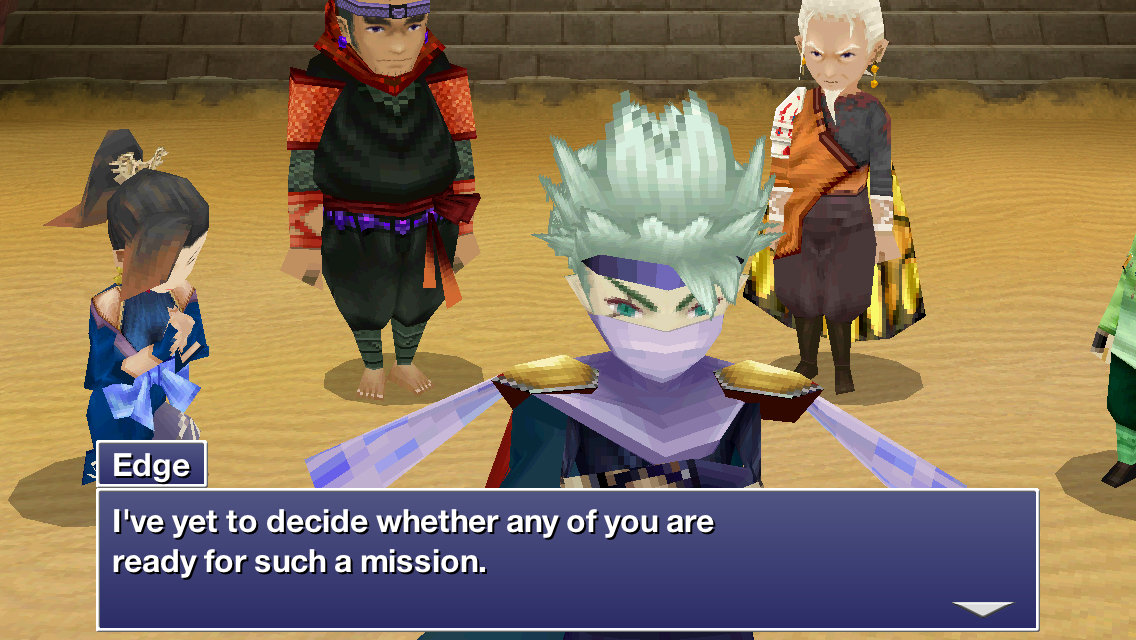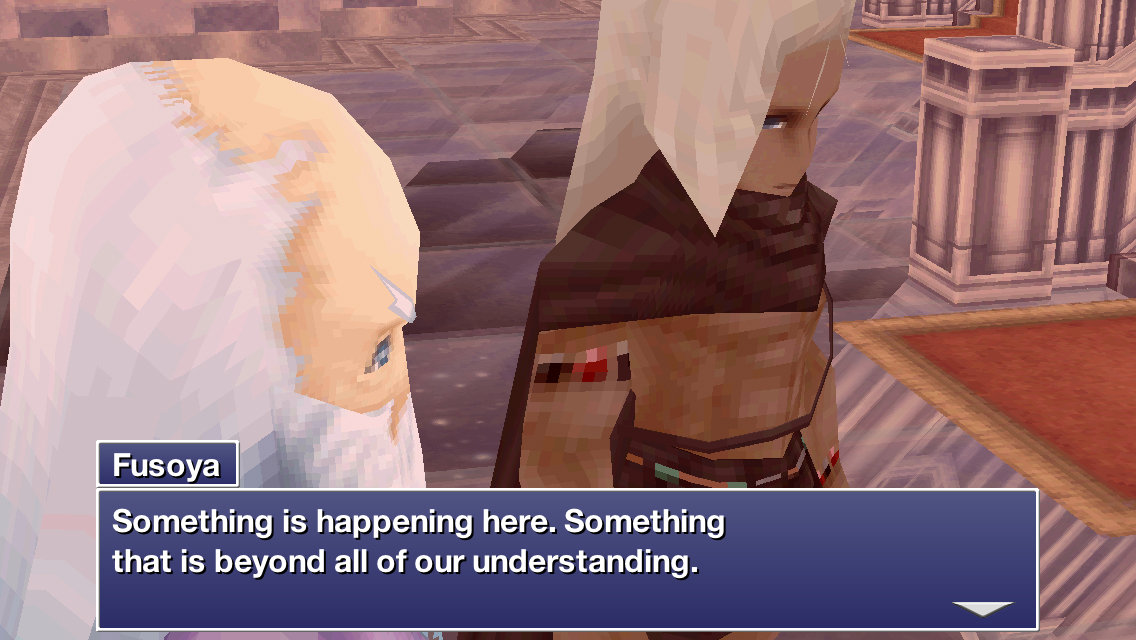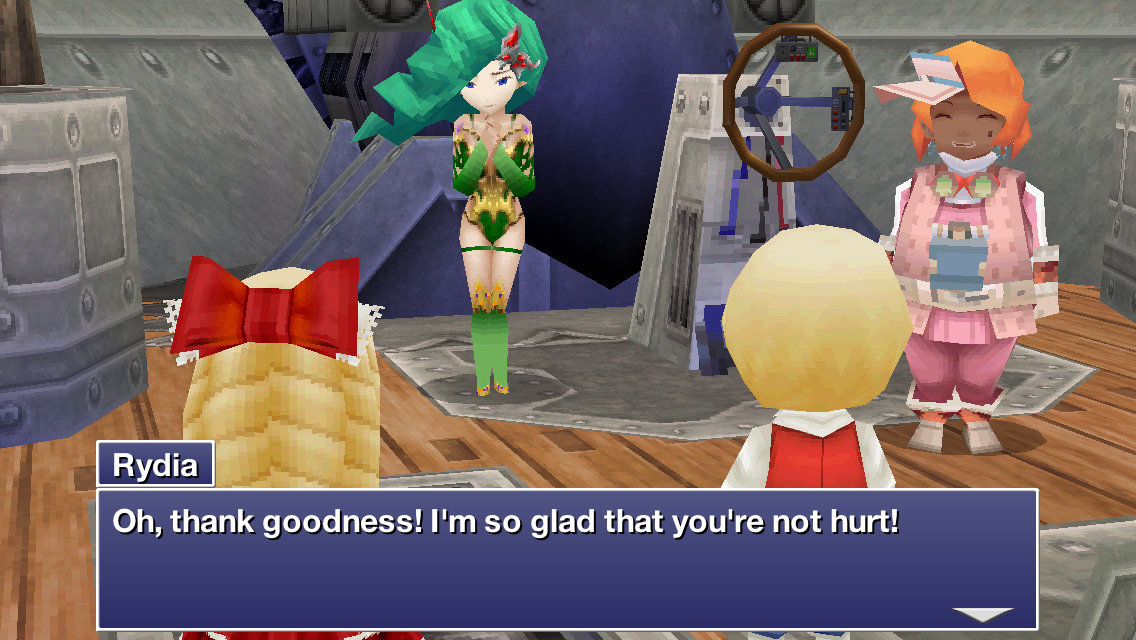After being thoroughly charmed by developer Matrix Software’s Final Fantasy III Nintendo DS remake, I adored my time with their Final Fantasy IV remake. I was intrigued when I heard that the classic old-school FF had a sequel, so I leaped from 3D graphics to pixels to play the Final Fantasy IV: The After Years that came bundled in the PSP’s Final Fantasy IV: The Complete Collection. Unfortunately, time constraints and a sense of burnout after reaching the game’s halfway point resulted in me putting the handheld down. It wasn’t until I learned, mainly by chance, that Matrix Software developed a 3D remake of Final Fantasy IV: The After Years in the same vein as their FFIII and FFIV remakes that I decided to once more embark upon FF nostalgia and give the title another chance. I was glad I did by the time the ending credits rolled, even if FFIV: The After Years isn’t remotely a necessary sequel.
The After Years is set years after the heroic adventures of FFIV‘s Cecil and his comrades, with Cecil and Rosa’s teenage son Ceodore commencing his first mission as a rookie Red Wings member. In true JRPG fashion, things go wrong, starting with the sudden appearance of a mysterious new moon in the sky and an enigmatic threat looming in its broad shadow. Add to that an ethereal girl garbed in white casting powerful magic, making hostile moves for the various nations’ crystals. Can Ceodore, alongside a whole host of both returning and new characters, save the planet, or is history doomed to repeat?
History repeating itself is apt to describe much of the plot in Final Fantasy IV: The After Years. The game noticeably retreads plot points from its predecessor to the point where characters even make the occasional meta-commentary. It’s amusing, but also makes the title feel unnecessary. After all, if I wanted to replay FFIV‘s plot, I could replay FFIV. Characters such as Cecil, Rosa, Cid, Yang, and Rydia remain the same as their already-established personalities. Cecil is essentially a non-entity in the overreaching narrative until the latter half of the game’s final “episode,” which is bizarre given how he’s the hero of the first tale. Disappointingly, Rosa and Cid are the only surviving original party members besides Cecil who do not get their own character-specific episodes, making them feel like afterthoughts. It doesn’t help that Rosa’s one chance to stand out from the crowd in the final episode is entirely missable. This discrepancy could be understandable if the new characters like Ceodore had more to do in the story to balance it out, but sadly, a lot of their screen time is easily forgettable, and many don’t get much character development throughout the journey.
That isn’t to say there aren’t any interesting plot threads in The After Years. While new characters like Ceodore, Ursula, and the Eblan Four are somewhat lacking, the dwarven princess Luca (serving as Cid’s apprentice) and the Epopt-in-training Leonora are standouts given their personalities and reactions to story shenanigans. I also immensely enjoy “spoony bard” Edward’s storyline and character development throughout The After Years, as he’s a capable leader to his people, and his narrative receives a nice touch with the tentative healing potential of the bond he forms with his secretary, Harley. Being a twin myself, I also liked the portrayal of Mysidian mages Palom and Porom’s shifting sibling dynamics as they attempt to be individuals but still care for one another. Edge shows some welcome character growth throughout The After Years, and Kain and Golbez’s storylines are high points, even if one can argue Kain’s story is a retreading of Cecil’s from the first game. It’s a shame that the other characters don’t have as many memorable moments comparatively.

Final Fantasy IV: The After Years was originally an episodic game, and its roots are still apparent in this 3D remake since you get to choose which story arc you first want to explore, which unlocks others. Each episode focuses on the adventures of a specific character until the whole party comes together for the final episode called “The Crystals.” This version keeps episode saves neatly separate for carryover purposes later on, which is especially helpful and an excellent quality-of-life feature compared to the PSP version’s archaic save system. Until the final one, each episode is roughly two to four hours long, with some significantly more memorable than others. For my life, I can’t remember much about Yang’s Tale compared to, say, Rydia’s. The Crystals is a considerably longer episode to close the game out on, though once you gain access to the Lunar Whale, it’s a lengthy dungeon crawl that tests your patience. This episodic format is an odd choice for a version of the game released in one go, especially given how different The Crystals feels compared to the other episodes. It’s as if you’re playing two different games.
From a combat stance, FFIV: The After Years features the active turn-based battle system that earlier FF games are known for. Instead of relying on Augments like the original Final Fantasy IV 3D remake, every character has set abilities and gains more skills as they level up. Certain party member combinations have special group moves called Bands that are especially powerful and gain strength as they level up. You even feel the moon’s presence in combat, as the moon’s phases will strengthen particular abilities and weaken others. Some powerful monsters only appear during specific stages of the moon, so caution is necessary when traversing through hostile terrain. Combat is solid enough without doing anything inherently wrong or differentiating itself either. As can be common in “old school-styled” games, level grinding, especially during The Crystals when cementing your final party, is essential for survival.
The 3D graphics in this remake probably aren’t going to wow anyone, though they’re expressive enough during certain story scenes. I love that the game uses the PSP version’s FMV opening, though! The game likely had a slim development budget, given the recycled graphical assets from the FFIV 3D remake. The final dungeon, in particular, was retooled for this version so that they could avoid making new dungeon areas and enemies whenever possible. Music-wise, the game uses a lot of tracks from FFIV to significant effect, which isn’t surprising considering the high caliber of music in that title. The few TAY-specific tracks, such as “Mysterious Girl Battle Theme,” are well done. Sadly, unlike the Final Fantasy IV remake, The After Years remake has no voice acting. Despite nicely handled localization and script work, there are a few noticeable typographical errors at the end of The Crystals.
While the game is straightforward enough to figure out, some examples of Guide Dang It! can be rather annoying, particularly if you want a particular character to survive the endgame or ensure you gain access to all of the Eidolons again. The game doesn’t do anything inherently annoying, but it is a middle-tier FF experience not necessarily vital to play as a sequel or otherwise, but it can be nostalgically entertaining in small doses if not taken seriously. I enjoyed the ending when all is said and done, but FFIV fans don’t have to play TAY. Final Fantasy IV: The After Years 3D remake is a good nostalgic throwback for fans of the DS remakes of FFIII and FFIV, but not necessarily one those fans should need or want to play.




